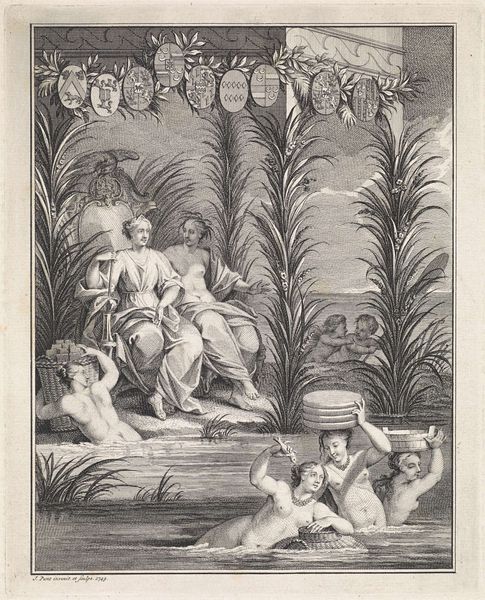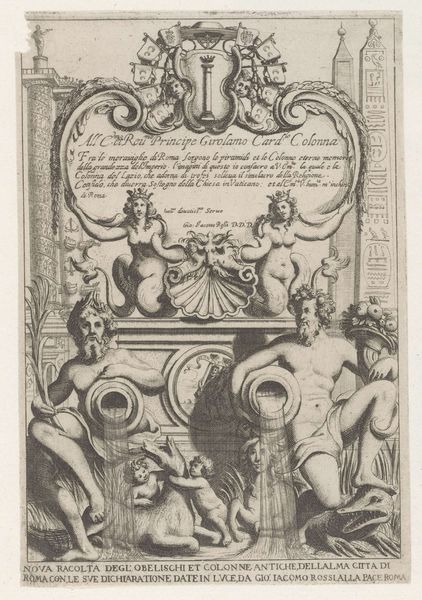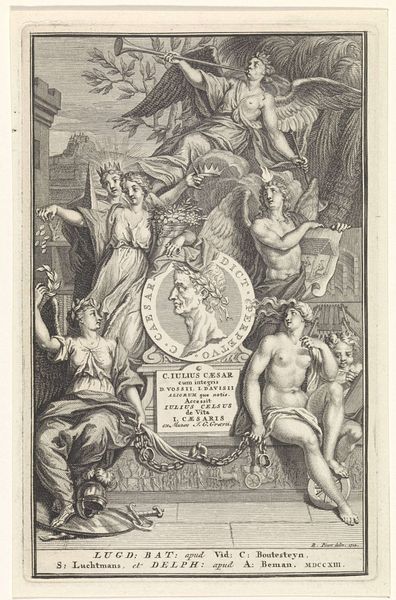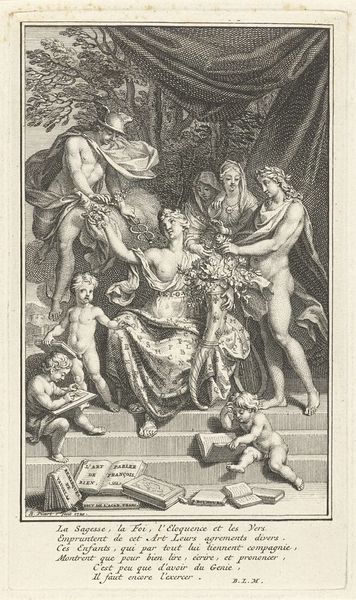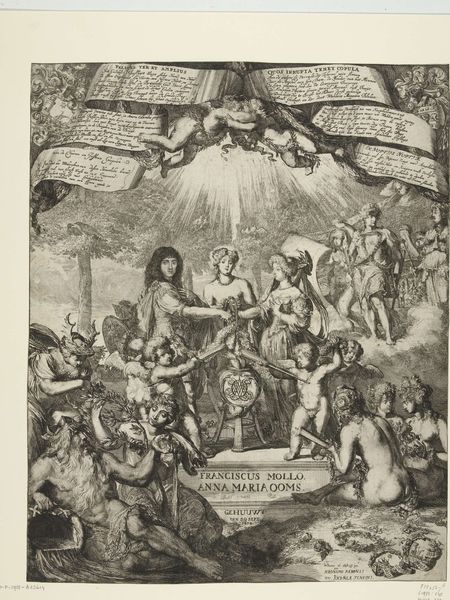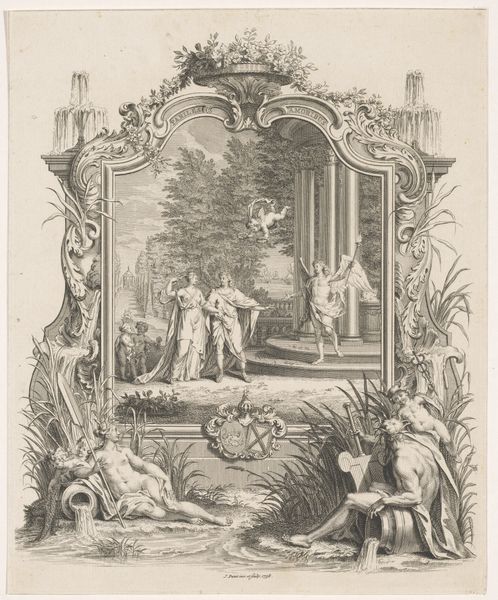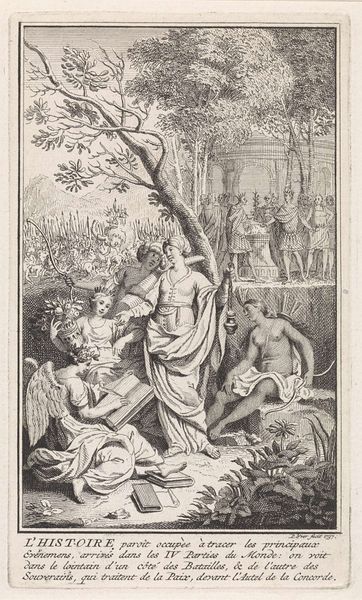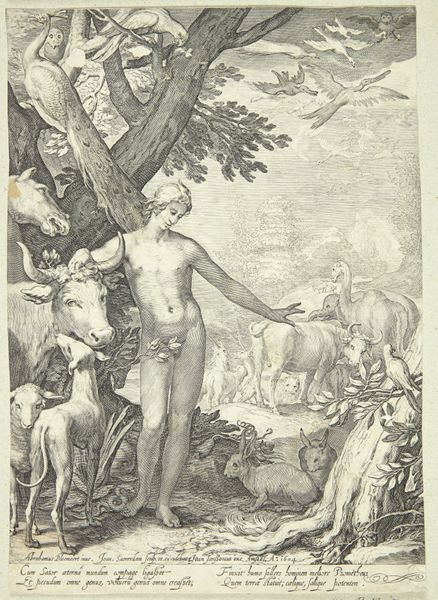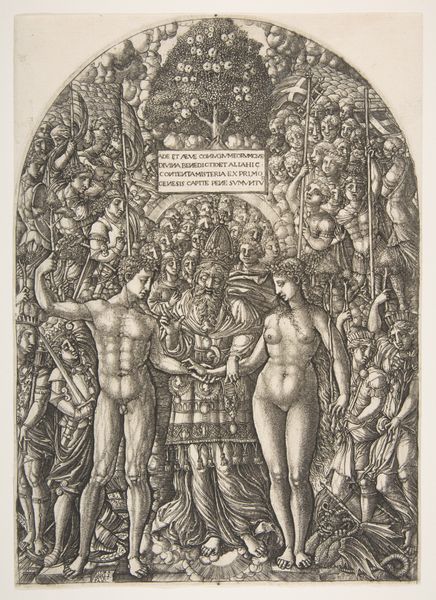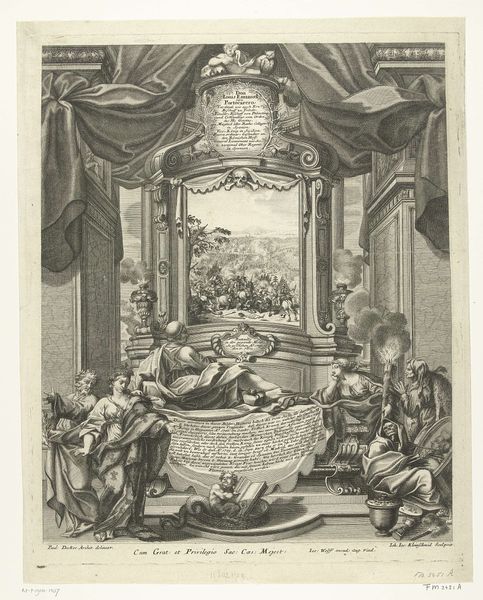
print, engraving
#
portrait
#
pen drawing
# print
#
landscape
#
figuration
#
11_renaissance
#
history-painting
#
engraving
Dimensions: height 321 mm, width 206 mm
Copyright: Rijks Museum: Open Domain
Curator: This is the frontispiece to the "Historia Naturalis Brasiliae," printed in 1648. It’s an engraving. We attribute it to Theodor Matham, although that remains debated by some. Editor: Wow. Overwhelming doesn’t begin to describe it. Dense, intense, like a jungle crammed onto a single sheet. What's even happening here? Curator: It represents a vision of Brazil filtered through a European lens, specifically Dutch colonial interests. You see indigenous Brazilians alongside a reclining figure symbolizing a river god, fauna, flora and other colonialists behind a screen of trees, a sort of idealized landscape representing newfound resources. Editor: Idealized maybe for the colonizers. For me, it feels… performative. Like it's staging Brazil for consumption, literally framing it for a European audience, monkeys, turtle and all. Look at those figures! They look like actors striking a pose, not living, breathing people. Curator: Well, Matham was working from descriptions and perhaps sketches provided by others; first-hand experience wasn’t the basis for his art. His skill as an engraver lies in synthesizing these elements into a coherent and visually engaging image. Editor: I guess, but even the texture is interesting. The close hatching of lines, creates a kind of shimmering effect, almost like heat rising. Maybe that adds to that feeling of unreality, the heat of expectation and greed. Curator: Or simply a highly detailed reproduction process, suited to printing multiple copies, intended for wide distribution as part of a scientific treatise. These kinds of images are a crucial aspect of the consumption and propagation of new ideas, as the West invades the East. It’s what these colonizers leave as the sole images of Brazilians. Editor: Good point. So it's both an attempt to capture and also a declaration of ownership, packaged and distributed. Fascinating and deeply unsettling, a window into both scientific curiosity and the colonial mindset. Curator: Precisely. It’s a piece that reminds us of the inherent biases and complex motivations embedded within seemingly objective representations of the world.
Comments
No comments
Be the first to comment and join the conversation on the ultimate creative platform.
